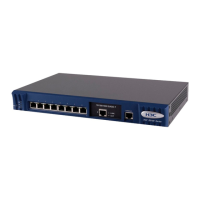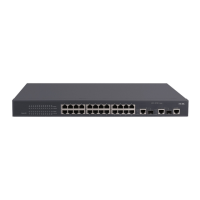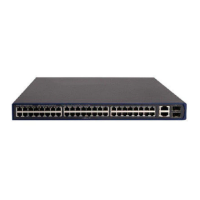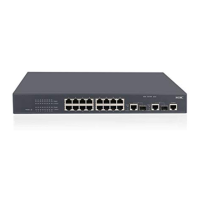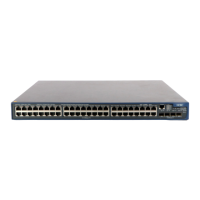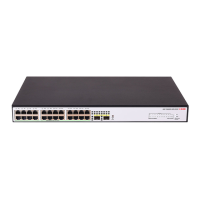1-13
display storm-constrain
Syntax
display storm-constrain [ interface interface-type interface-number ] [ | { begin | exclude | include }
regular-expression ]
View
Any view
Parameters
interface-type: Port type.
interface-number: Port number.
|: Uses a regular expression to filter the output configuration information.
begin: Displays the configurations that begin with the string specified by regular-expression.
exclude: Displays the configurations that do not contain the string specified by regular-expression.
include: Displays the configurations that contain the string specified by regular-expression.
regular-expression: Regular expression.
Description
Use the display storm-constrain command to display the storm control configurations.
Examples
# Display the storm control configurations.
<Sysname> display storm-constrain
Abbreviation: BC - broadcast; MC - multicast; UC - unicast
Flow Statistic Interval: 5(second)
PortName Type LowerLimit UpperLimit CtrMode Status Trap Log SwiNum Unit
--------------------------------------------------------------------------
Eth1/0/2 BC 100 500 N/A normal on on 0 kbps
Eth1/0/2 MC 100 500 N/A normal on on 0 pps
Table 1-5 Description on the fields of the display storm-constrain command
Field Description
Flow Statistic Interval Interval to collect traffic statistics.
PortName Name of an Ethernet port
StormType Traffic type, which can be unicast, multicast, and broadcast
LowerLimit Lower threshold of traffic received on the port
UpperLimit Upper threshold of traffic received on the port
Ctr-mode
Control action to be taken when the broadcast/multicast/unicast traffic exceeds
the upper threshold, which can be block or shutdown.
Status Current status of the port, which can be normal or control.
Trap
on: trap information is output when a type of traffic received on the port exceeds
the upper threshold or falls below the lower threshold.
off: trap information is not output when a type of traffic received on the port
exceeds the upper threshold or falls below the lower threshold.
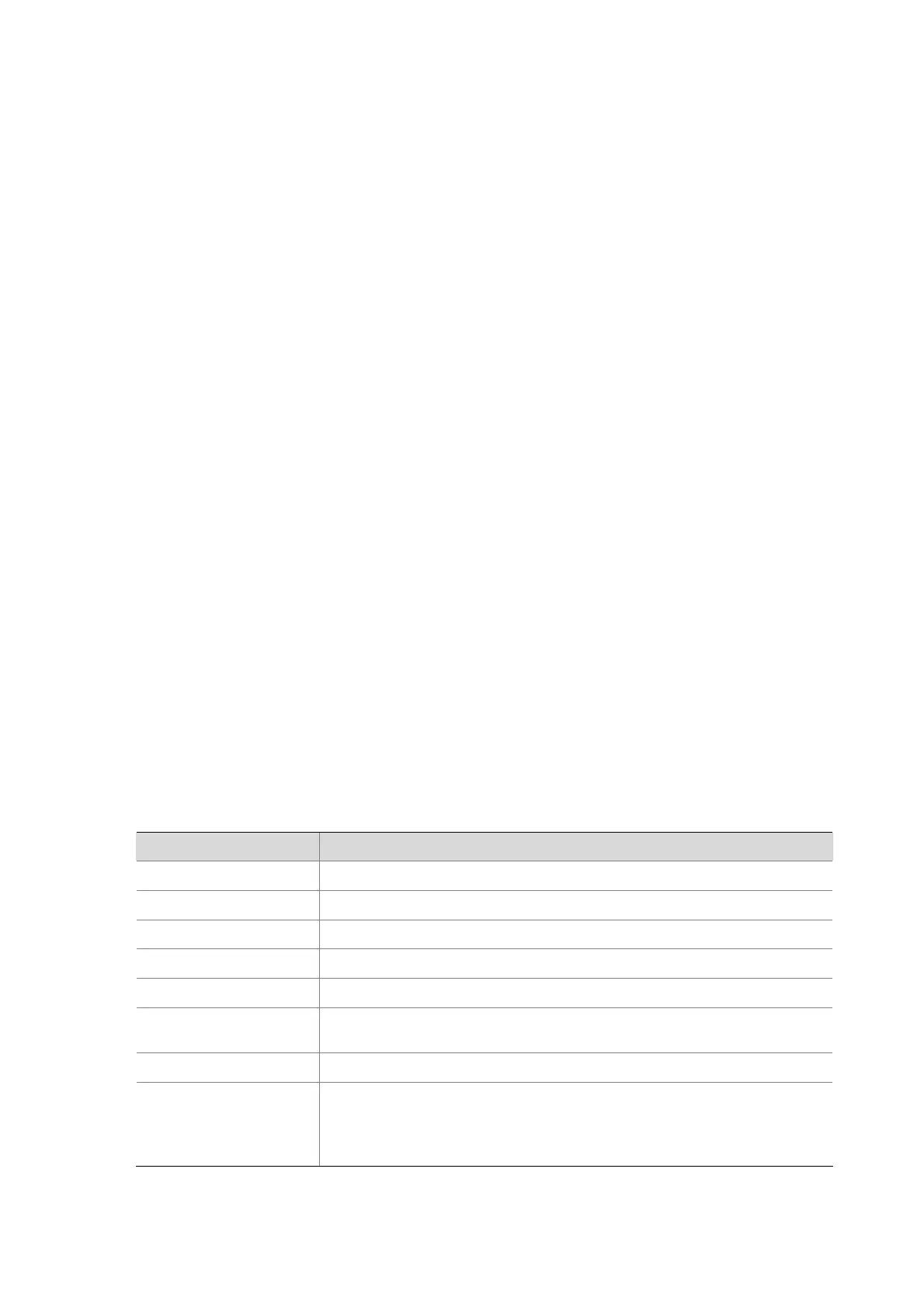